November 29, 2024
Archaeological sites in the Sacred Valley of Cusco
In the Sacred Valley you can find important Inca buildings. This is mainly because the entire valley was and continues to be an ideal geographic space for growing food. Corn was the ideal food for the entire Inca civilization to expand throughout all the places that we now know formed the Tahuantinsuyu. Today, after many years, you can find vestiges of several Inca enclosures, but also of larger spaces. Join us to learn more about the archaeological sites of the Sacred Valley of the Incas in Cusco.
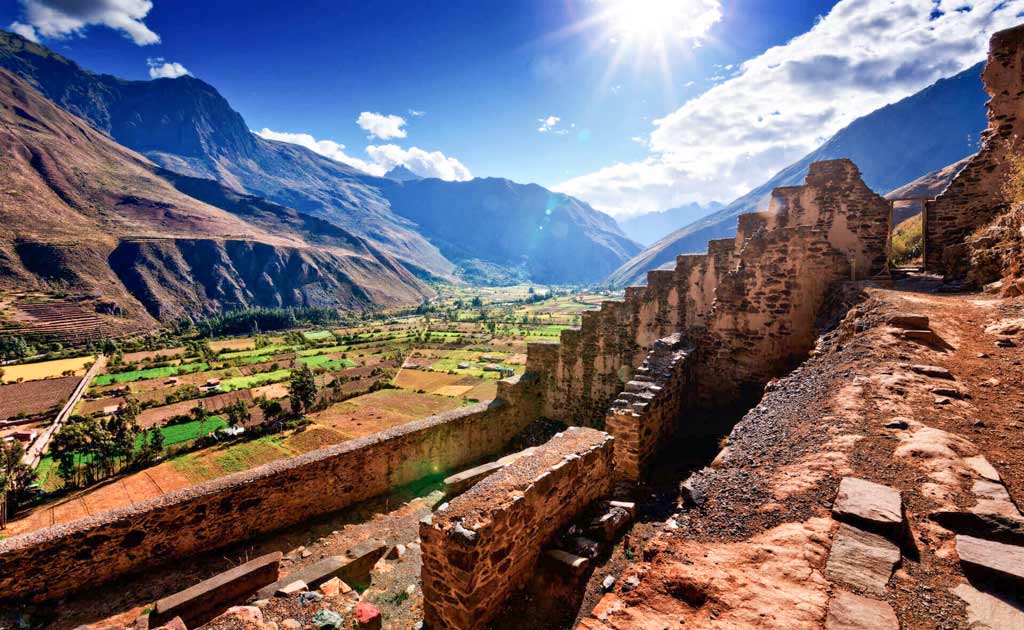
Content
- What is an archaeological site?
- The most important archaeological sites in the Sacred Valley
- What do I need to enter the archaeological sites?
- Summary of the archaeological sites of the Sacred Valley
- More information about the Sacred Valley
- Frequently Asked Questions
What is an archaeological site?
An archaeological site or site is a space where remains of human activity can be found, more precisely, from past human activity. In these places it is possible to find artifacts, remains of buildings, paintings, artistic expressions in general, funerary, ceremonial and everyday objects.
In the case of the Sacred Valley, some of the remains can be found in Site Museums, but also in private exhibitions. Unfortunately, since it was a time of looting and invasion, there are few recorded vestiges, and the entire cultural process only focused on destroying the Andean or Inca tradition and culture. So why are archaeological sites important? Let’s see.
- They are evidence that helps us learn about the history, culture and ways of life of the ancient civilizations that occupied it.
- They serve as a fundamental source of cultural identity for a geographic sector, community, and nation.
- They strengthen the ties of a community, the sense of belonging and connection with the past.
- They are economic sources, thousands of tourists can come to visit these spaces.
- They help to promote decent jobs with stable salaries in nearby towns.
- It allows other campaigns such as environmental conservation to be developed.
The most important archaeological sites in the Sacred Valley
Among these places, the closest destinations to Cusco will stand out and at the same time they are part of the Sacred Valley Tour in Cusco. Thus, we can find the following archaeological sites that we will detail below:
Písac
It is one of the first constructions commissioned since the Inca dominion over Cusco was consolidated. The passage to the Sacred Valley was vital and the communities or tribes that inhabited lands near Písac were integrated into the Incas.
After this military and political movement, the construction of the main temples that we can see today began. This was by order of the Inca Pachacútec who began all the reforms after the victory against the Chancas. Inca architecture specialized in stone buildings, they carved large stones to organize them in such a way that the walls and main foundations would have incredible solidity.
Unfortunately, it was a place that was destroyed and looted by the arrival of the tribes allied to the Spanish and the Spanish themselves. That is why damaged and collapsed temples can be seen. However, the site that suffered the most damage from that time was the Inca cemetery, which was completely looted.
WHERE IS PISAC?
Pisac is located just 1 hour from Cusco by traveling north. The trip is quite easy to make because the route follows a paved road.
ALTITUDE OF PISAC
Písac is located at an altitude of 3,347 meters above sea level. It is located on the top of a mountain that is approximately 3 kilometers away from the current town of Písac.
HOW TO GET TO PISAC?
It is usual to make the trip with a travel agency, but it is also possible to make the trip on your own. From Cusco you can find transportation by car or minivan on Puputi Street.
Once in Písac, there are two options to get to the archaeological site. The first is to do it on foot. It is also possible to request a taxi service from there, the journey time will be only 20 minutes.
HOW LONG DOES THE TOUR OF PÍSAC TAKE?
The tour of the archaeological site of Pisac lasts on average between 3 and 4 hours in total. Therefore, it is recommended to wear comfortable shoes, comfortable clothing, and especially sunscreen and a hat or similar.
MAIN ATTRACTIONS OF PISAC
- Agricultural terraces – Right from where the route begins. There are 40 terraces surrounding the entire mountain. The platform changes its dimensions, as the ones at the beginning are small and as you ascend the size of the terraces increases.
- The Temple of the Sun – This is one of the main buildings, made up of impressive stones carved in imperial style. It is circular in shape and inside there is a large stone.
- The Intihuatana – Located in the imperial zone of Písac, where the temples and buildings of great value are located. It is a circular stone with peculiar carvings that seem to be ideal for stargazing.
- Inca Cemetery – This space is located a little far from the main temples. Unfortunately, it was looted by the Spanish and enemy ethnic groups who arrived after the conquest and occupation of Cusco.
- Ceremonial Center – Písac, was a very important site due to the presence of the temples and the Ceremonial Center. In this place you can appreciate the composition of the temples together with wide esplanades or plazas.
- Towers of Písac – In Písac you can find large towers, reaching a length of 3 meters, it is estimated that they had the function of storing water and transporting it through the canals that run through the agricultural area and the terraces.
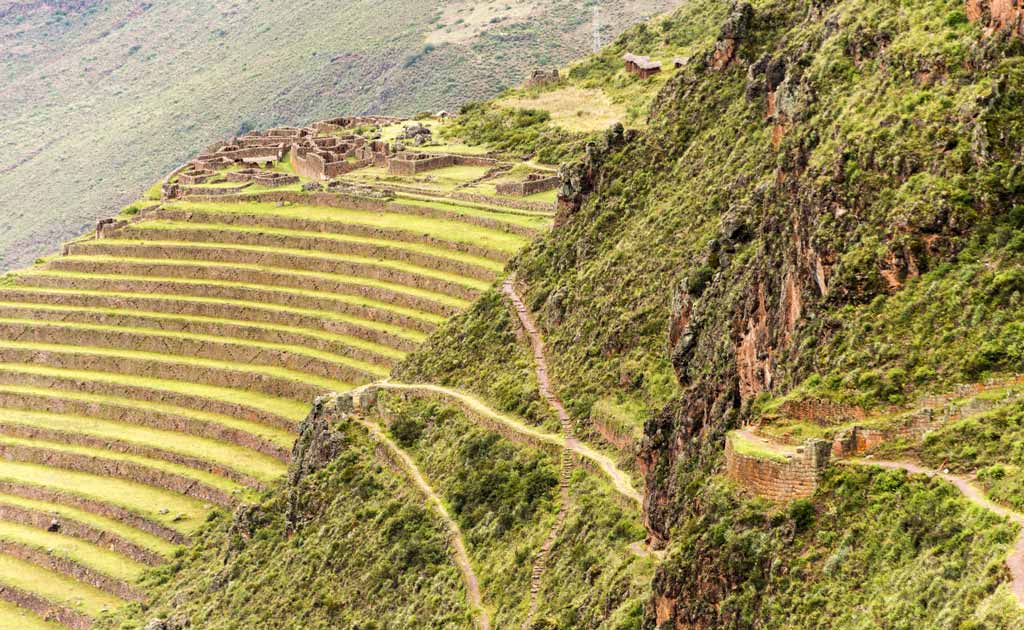
Ollantaytambo
This is an archaeological site of great value, very similar to buildings such as Pisac and Machu Picchu. You can find a temple sector, an agricultural sector and other important buildings. There are also a large number of warehouse areas, very different from the usual Colca ones.
Like Písac, it is a significant archaeological site that displays different temples and buildings that refer to the changes that the Inca Pachacútec established for greater expansion. And thus, precisely, Ollantaytambo would be a fundamental step to enter the high jungle , as it functions today.
Another important detail of Ollantaytambo and the main characteristic of Ollantaytambo is that the current population maintains the urban layout of the Incas. That is, the majority of houses that the population occupies were inhabited by settlers of the past.
Likewise, Ollantaytambo is an area that benefited greatly from the fertile land, so Manco Inca’s positioning was crucial during the attempt to recover Cusco from the Spanish. Unfortunately, Manco Inca was defeated and had to retreat to Vilcabamba.
WHERE IS OLLANTAYTAMBO?
Ollantaytambo is located in a strategic area, near the Vilcanota River and between mountains. The travel time from Cusco is approximately 1 hour and 50 minutes.
ALTITUDE OF OLLANTAYTAMBO
Ollantaytambo is located at 2,972 meters above sea level. It is located near the Vilcanota River and also far below the high mountains. The archaeological site is located on the top of a mountain and surrounded, as usual, by agricultural terraces.
HOW TO GET TO OLLANTAYTAMBO?
The best option is to make the trip with the help of a travel agency. However, it is also possible to get to and visit the archaeological site on your own. To do so, you have to take a minivan on Pavitos Street, near the historic center of Cusco.
Once you arrive in Ollantaytambo, the journey to get to the archaeological site is easy. As we mentioned, it is very close to the current town and it takes less than 5 minutes to get there. You can also visit the handicraft market. Another option is to continue the trip to Machu Picchu.
HOW LONG DOES THE TOUR OF OLLANTAYTAMBO TAKE?
The tour of the Ollantaytambo archaeological site can take between 1 hour and 1 hour and 30 minutes. It all starts from the lower area and the agricultural zone, moving on to the main temples and other attractions that make up the entire Ollantaytambo archaeological site.
MAIN ATTRACTIONS OF OLLANTAYTAMBO
- Agricultural terraces – Inca buildings are almost always surrounded by agricultural terraces. It is believed that they were once planted with corn and in some cases coca leaves. These serve to filter excessive water during the rainy season.
- The Temple of the Sun – This is one of the most impressive buildings in the entire Inca Empire. It is made up of large stone walls. It also has traces of its decorations including carvings and gold pieces.
- The water temple – It is one of the buildings that was built on the foundations of an ancient temple. Among its foundations you can see the presence of the Incas and ancient cultures.
- Water channels – Some water sources can be found coming from different water channels. Some of these carry water till date and most of these are carried from groundwater.
- The Ñusta Bath – This is a water fountain with important carvings in the stone itself. It is believed to have been extensively decorated and had a ceremonial space.
- Monumental Gate – This is one of the main entrances to Ollantaytambo. The passage through this gate connects with the Qhapac Ñam or Inca Trail. It also offers a beautiful view of the entire archaeological site and the current population.
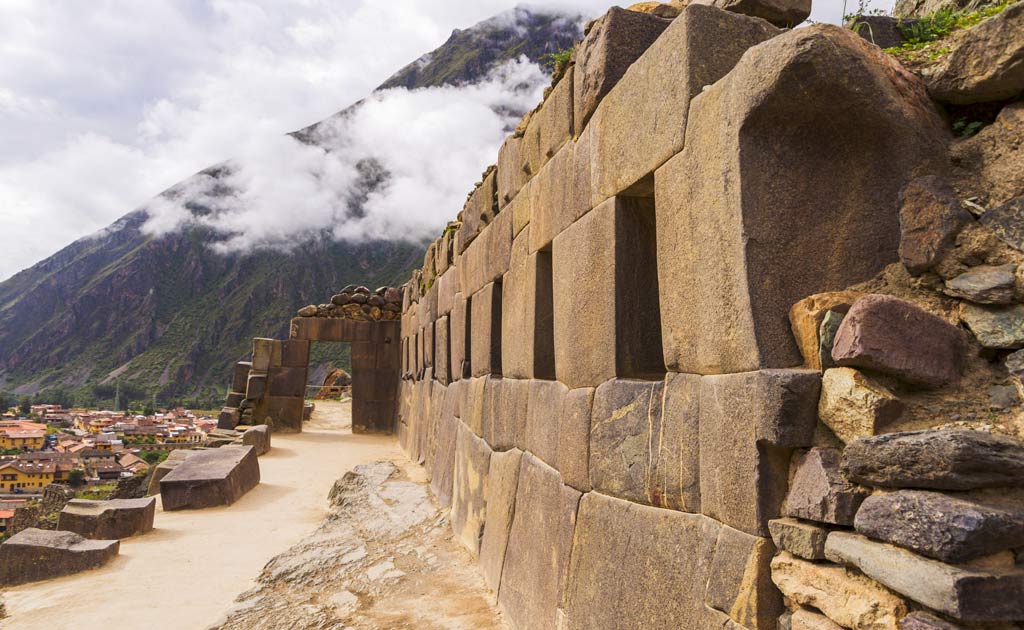
Chinchero
It is one of the archaeological sites that was also integrated into the current population, something similar to what happened with Ollantaytambo. Chinchero was one of the first spaces to be conquered after the Inca dominion was consolidated in this territory.
Chinchero was formerly inhabited by the Killke people. The entire geographic area of Chinchero covers 43 hectares. The consolidation of this space was developed and organized by the son of Pachacútec, the Inca Túpac Yupanqui, who ordered the construction of a palace or royal house dedicated directly to him.
Since it was built as a space dedicated to such an important figure, it has a large expansion with several Inca enclosures. Today, you can find a large number of terraces, the presence of a colonial church and the palace of the Inca Túpac Yupanqui.
It was also one of the areas that Manco Inca attacked and subdued during his rebellion. He burned a large part of the warehouses and also the main temples. Later, it was looted and destroyed so that colonial buildings could begin to be built.
WHERE IS CHINCHERO?
The archaeological site of Chinchero is located in the current district of the same name. The distance between Cusco and Chinchero is only 31 kilometers, so the travel time is 1 hour at most.
ALTITUDE OF CHINCHERO
Chinchero is located in a high area of the Sacred Valley of the Incas. Exactly, it is 3,792 meters above sea level. Thanks to this location you can find beautiful views of the entire valley and the mountain range of the place. It is also an ideal place to appreciate rainbows in the rainy season.
HOW TO GET TO CHINCHERO?
The main way to get there is by making the trip with the help of a travel agency. They will take care of everything necessary such as transportation and entrance tickets so that travelers do not have to worry about those details.
It is also possible to do it independently. To do so, you must take the transport from Belempampa Street, located 1 kilometer from the Plaza de Armas in Cusco. The travel time is less than an hour if you make the trip directly.
Once in Chinchero, getting to the archaeological site is easy, as it is integrated into the current population. If we start from the current square of Chinchero, it will only take 10 minutes on foot to reach the entrance area of the archaeological site.
HOW LONG DOES THE TOUR OF CHINCHERO TAKE?
The tour of the archaeological site of Pisac lasts on average between 3 and 4 hours in total. Therefore, it is recommended to wear comfortable shoes, comfortable clothing, and especially sunscreen and a hat or similar.
MAIN ATTRACTIONS OF CHINCHERO
- Agricultural terraces – Near the colonial church you can find agricultural terraces that also served as retaining walls. These terraces in some cases form wide esplanades ideal for holding ceremonies.
- Colonial Church – Christian churches were built on the main Inca temples. This is the case of this colonial church named after Our Lady of Montserrat, which was originally a place for the captivity of indigenous people.
- Túpac Yupanqui Palace – This is a large building, mainly because it has many spaces and details in its construction. The imperial-style carved stones, water channels, trapezoidal doors and windows stand out. As for the Inca enclosure, Inca walls and the presence of adobe to make higher buildings can be seen.
- Inca Walls – Among the narrow streets of the current town of Chinchero, you can find the presence of different Inca walls. These often serve as foundations for current homes.
- Titicaca Stone – This is a large stone. It reaches 15 meters in height and dimension.
- Inca Trail or Qhapac Ñam – You can see some of the routes that connected with this important Inca site. These roads are still used today, especially by muleteers, cattlemen and also to move from community to community. This road is known as the Chinchero – Urquillos route.
- On-site museum – This is one of the options to learn more about Chinchero. In the on-site museum you can find textile centers that still use ancestral techniques and materials. You can also find some Inca pieces that were found during the excavations. Likewise, you can find artistic pieces from the colonial era.
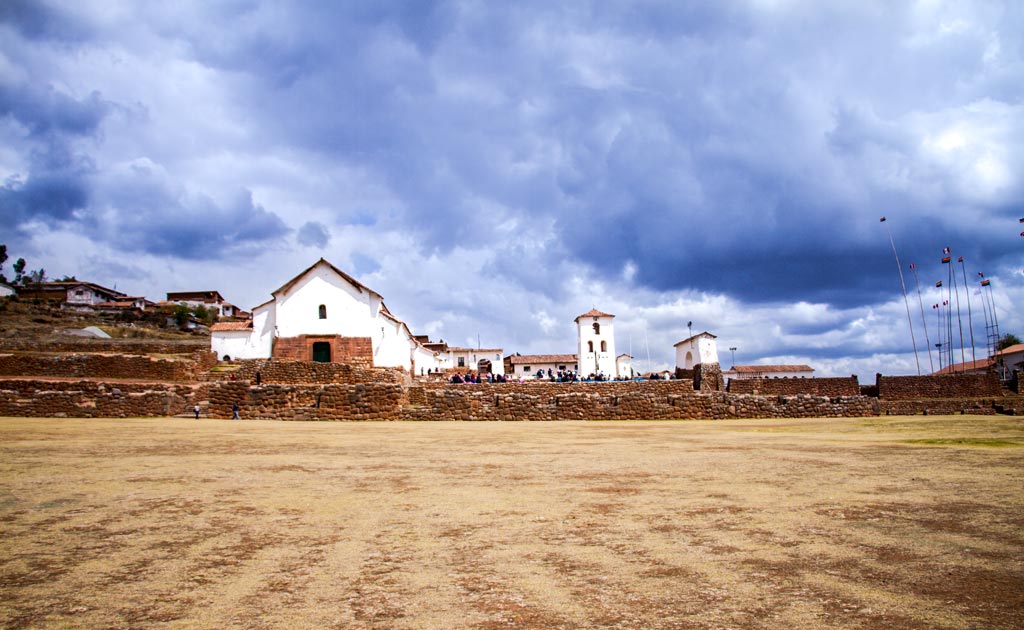
What do I need to enter the archaeological sites?
To enter all the archaeological sites mentioned, you will need to purchase the Cusco Tourist Ticket. This is only required if you travel on your own, since if you do so through a travel agency, it will be included in their services. The cost is 70 PEN and allows entry to the following archaeological sites.
- Archaeological site of Pisac.
- Ollantaytambo archaeological site.
- Chinchero archaeological site.
- Moray archaeological site.
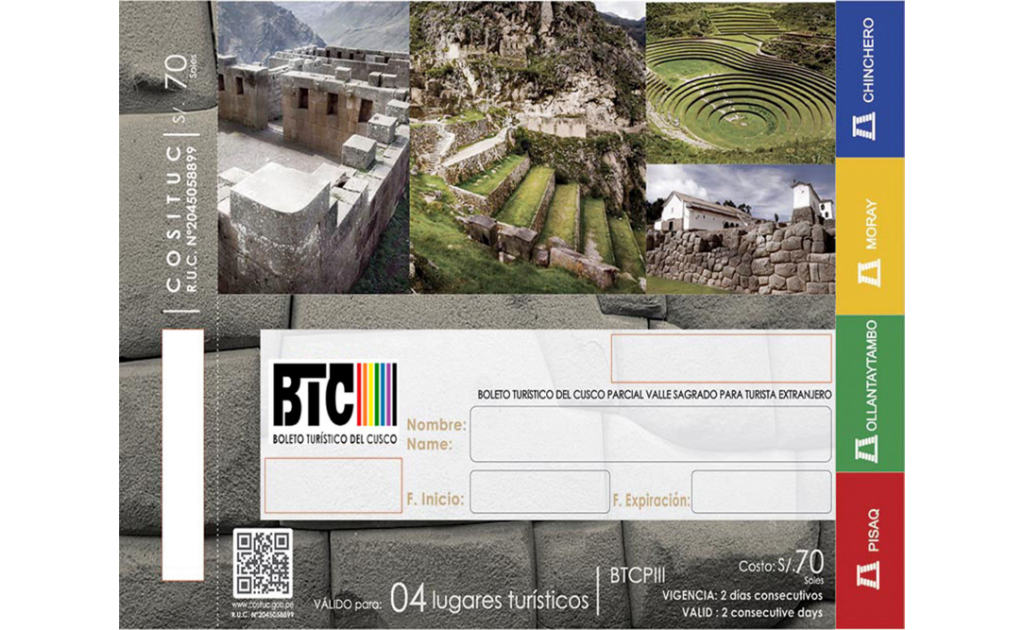
Summary of the archaeological sites of the Sacred Valley
Archaeological site | Location | Main attractions |
|---|---|---|
| PÍSAC | One hour drive from Cusco. |
|
| OLLANTAYTAMBO | A 2-hour trip from Cusco. |
|
| CHINCHERO | A 1 hour direct trip from Cusco. |
|
More information about the Sacred Valley
- It is advisable to tour all the archaeological sites with the help of a travel agency.
- Find out and consult everything that is included in the service you are going to purchase.
- Remember that from Ollantaytambo you can make the trip to Machu Picchu.
- There are different tours and activities that can be done in the Sacred Valley.
- It is possible to combine the entire route of these sites with a visit to the Circular Terraces of Moray.
- In the Sacred Valley there are a large number of restaurants, all of them with notable prestige.
- Hotels of all categories can also be found throughout the Sacred Valley.
Frequently Asked Questions
1. WHAT ARE THE HOURS OF THE ARCHAEOLOGICAL SITES OF THE SACRED VALLEY OF THE INCAS?
- The Ollantaytambo archaeological site can be accessed from 7:00 a.m. to 5:00 p.m.
- The archaeological site of Písac can be accessed from 7:00 a.m. to 5:00 p.m.
- The archaeological site of Chinchero can be accessed from 7:00 a.m. to 5:00 p.m.
2. HOW DO I BOOK THE SACRED VALLEY TOUR?
It is possible to do so online, specifically through various travel agencies, and also to acquire the necessary services to do so independently or without an agency. However, to avoid any inconvenience or inconvenience, it is best to do so with a travel agency or by renting private transportation.
3. WHAT SHOULD I BRING OR TAKE INTO ACCOUNT WHEN TOURING THE ARCHAEOLOGICAL SITES OF THE SACRED VALLEY?
The tour is almost entirely open-air, so rain or strong sunlight will be a problem. The main thing to keep in mind is the weather conditions on the day you take the tour. Also, learn more about the rainy season or the dry season. That is, learn more about the best season to visit the Sacred Valley.
4. ARE THE ARCHAEOLOGICAL SITES IN THE SACRED VALLEY EASILY ACCESSIBLE?
Yes, the three most representative archaeological sites of the Sacred Valley of the Incas are easily accessible. We are talking about getting to Písac, Ollantaytambo and Chinchero, which can be done easily by private vehicle or public transport. Therefore, both children and older adults can get to know this place without much difficulty.
5. ARE THE ARCHAEOLOGICAL SITES IN THE SACRED VALLEY CLOSING THEIR DOORS?
The few times they close are usually during social conflicts or due to environmental problems that do not allow the free movement of tourists. On the other hand, it is unlikely that the doors will be closed completely. Sometimes, some sectors may be left with maintenance equipment, so they cannot be visited. In light of these measures, the Ministry of Culture usually informs about changes in the routes or attractions of each archaeological site in general.